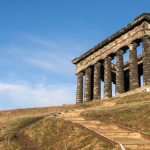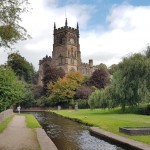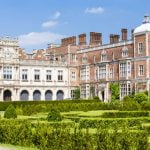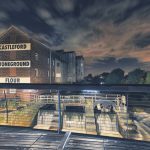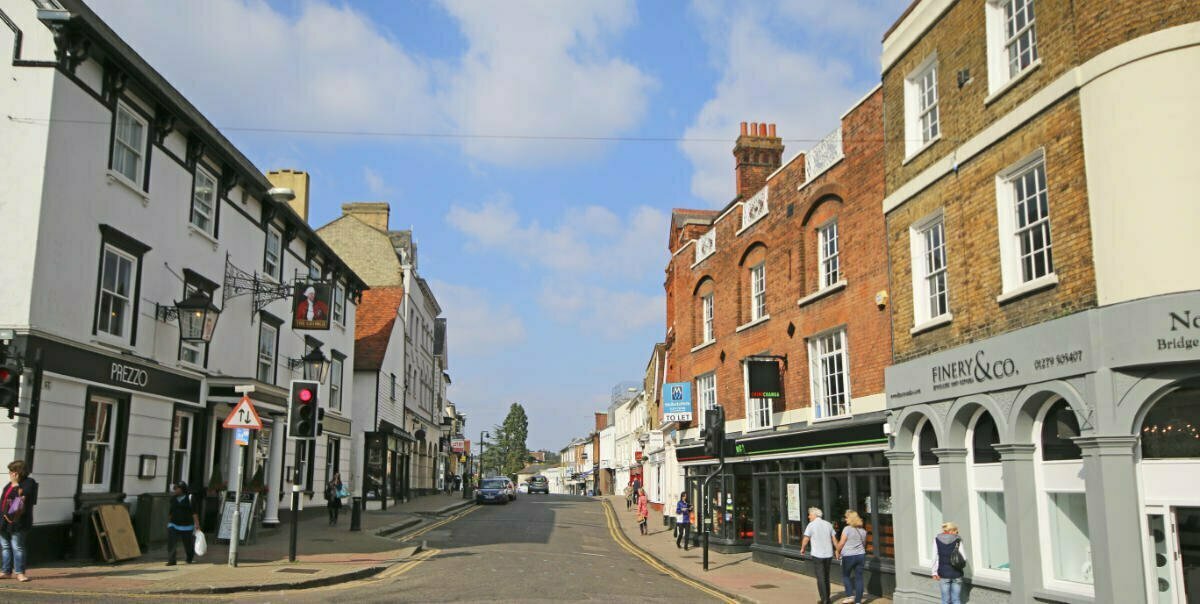
Here at Five Minutes Spare, we delight in taking tours of local locations to pass the best bits – and the worst bits – onto the visiting public. Nowhere is better for a holiday than at home, so let’s continue on our tours of local towns and cities with a little insight into Bishops Stortford. Primarily, we want to know how it got that name. It was something to do with the church.
Anyway: here is the long-anticipated Five Minutes Spare guide to the town of Bishops Stortford. Sit back, buckle up, and be ready to enjoy. Or annoying, depending on who you take with you.
The Early Days of Bishops Stortford
Bishops Stortford was a place people passed through when travelling from London to and from the north. It initially opened on Stane Street, which is the stone road the Romans built north into the ether. Bishops Stortford sits in between London and Colchester, making it an important passing place, as well as an important market town to the surrounding areas.
The small settlements around the town would never have made the trek to and from the bigger cities once a week, so Bishops Stortford was a convenient solution for buying and selling goods. It’s possible that the Romans left an unoccupied town in the 5th century when they returned to Rome.
In 1060, what remained of the town became the manor of Esterteferd, which records show royals gifted to a Saxon named Eddeva by the Bishop of London himself. Thus, the name became shorter over time. It went from Bishop’s Esterferd to Bishops Stortford over the course of many years.
In 1080, 6 years before he conducted the Domesday Survey, William the Conqueror built a motte and baily castle in the town. He placed castles all around England, but especially so in areas where the local populace fought back against Norman control. Little is really known about the town during the post-Roman, pre-Norman era.
The Doomsday Survey
The town was thriving at the time of the Domesday Survey in 1086. It contained 29 households, which was a big town for the time. The Survey records the land as owned by the Bishop of London. The Bishop owned 6 villagers, 8 smallholders, 12 cottagers (which meant something else back then), 1 priest and two men-at-arms. Of all the Domesday Survey entries we have looked over, this is the first time we have noticed soldiers entered into the record books.
As well as the people contained within the town, the Bishop owned:
- 10 ploughlands
- 2 lord’s plough teams with the potential for one more
- 5 lord’s lands
- Meadow containing a single plough
- 2 mills
- 300 pigs
- 2 mills
- 3 men’s plough teams
The town had a value of ten pounds in 1086. You can view the full entry here or stay with us as we move onto the medieval period.
The Medieval Period
During the Medieval period, the town went from strength to strength as a marketplace. In 1348, church records report a terrible outbreak of the plague in the area. Legend says that the plague came into the country from the southeast shores. It hit Bishop Stortford in 1348 and wiped out 20% or more of the town’s population. As a substantial market town, this did a lot of damage. In the year 1400, the town built St Michael’s Church. To keep out the plague.
The town grew quietly in the following few hundred years. The community was agricultural with a spattering of tanneries making leathers. By the time the 1500s rolled around, the town was rife with religious ideology.
In 1555, this culminated in a local man named John Denley being burned at the stake by the Bishop in the middle of Goosemead Green. The Bishop told everyone he was a protestant heretic. It was one of many religion-based atrocities to happen in England during the Dark Ages.
In 1572, local philanthropist Richard Pilson had five almshouses erected for the public poor. A few years later, in 1579, a grammar school opened. However many good deeds local lords and ladies did, however, they didn’t bring sewers or piped water to the town. A further outbreak of plague followed in 1582 and lasted into the following year. This tragedy repeated itself again in 1666 when yet another plague outbreak killed off the rest of the population. By the end of all those outbreaks, the town wasn’t quite on the same path to growth rate success as it had been before.
Bypass Blunder
In 1670 the Hockerill bypass opened for the first time. The town’s coaching business suffered horrifically as a result. With little work and plague all over the place, people started to move away. Some relief came in 1769 when the River Stort was made navigable. As an interesting side note, the river was not known as the Stort until then. It was known as the River Stour. However, there are many River Stours in England. The widening of the Stour turned it into a navigable canal system which they renamed the Stort, after the town.
By this time, the estimated population of the town in the mid-1700s was around 1,200 people. By 1801, the widening of the river had allowed the town’s breweries to turn profitable trade with nearby towns. The town had grown in population to 2,305 people.
Fun Facts About Bishops Stortford
We like to interrupt all of this history with some fun facts, trivia, and general local gossip. Below, you will find everything we could dig up about this town that’s sure to make you laugh, cry, or never forget it. Here are the fun facts about Bishops Stortford you have been waiting for:
- Bishops Stortford was rated the best place to live in the UK in 2020 by the Halifax Quality of Life annual survey.
- Some interpretations of the name indicate that the town named for Steorta’s Ford, or the tall ford.
- In the early days of the town, it paled in importance compared to nearby places such as Braughing and Hallingbury.
- Locals found a 3,000-year-old spearhead in the area, proving its occupation even pre-Roman times.
- Although scientists once thought the town small during the Roman era, up to 80 graves were found here by the side of Stane Street.
- One of the ways the town made its money in the 19th century was in malting. This is the process of making barley into malt so that you can brew it into beer.
- A fire in 2006 caused major drama in the town and reduced a 19th-century pub to ruins.
- There is some dispute among the locals over whether or not this town’s name contains an apostrophe. We chose to leave it out for the sake of consistency, but both forms are acceptable, even among local newspapers.
After that little bit of refreshment, let’s get stuck back into history. We’ll pick back up again during the industrial revolution.
The Industrial Revolution
By the time of 1841, the town had tripled in population from those dark days of the plague. There were 4,681 people living in town. A corn exchange opened in 1828 where the townsfolk could trade in grain. In 1842 the railway station opened for the first time courtesy of the Northern and Eastern Railway. Workers extended it to Norwich in 1845. In 1853, the man who founded Rhodesia, Cecil Rhodes, was born.
In 1859 the Church of the Holy Trinity opened. The Bishop of Carlisle paid a visit to consecrate it. Bishops Stortford College opened in 1868 with the railway line expanded to Braintree in 1869. The town received its own football club in 1974 and they are going strong to this day. The Bishops Stortford Urban District disbanded in 1974 but began back in 1894. The truth about this particular town is that the population somehow managed to remain small right up into the 1900s.
Rather than take a growth spurt in the 1800s, the town leapt in population in the early 1900s, instead. This is partially due to the introduction of the bypass, which took much of the passing trade away from the town.
Modern Times in Bishops Stortford
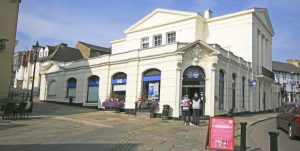
Image: Alastair Wallace/Shuttesrtock.com
In 1901 the population was 7,143. In 1905, the Castle Gardens opened. The golf club opened for the first time in 1910, a little later than in most large English towns. The Rugby club came ten years later. The census in 1911 showed 8,721 people. Locals finished the war memorial in 1922 after WWI. There are 208 names listed for the First World War and 106 names on the obelisk for WWII. You can read from the roll of honour, here.
In 1938, the town opened Cecil Rhodes Birthplace as a museum. By 1950, the town had its own high school. The railway line to Braintree closed and the population by 1971 was over 22 thousand people. In 1974, the football club were the last winner of the FA Amateur Cup. The Local History Museum opened in 1979 and in 1981, the town’s football team won the FA Trophy at Wembley. During the early 1900s, the town made money from light engineering, flour milling, and making matches. The town was a commuter town and remains one to this day thanks to its proximity to London.
Modern Bishops Stortford is a great place to live where families raise their children with ease. In 2002 the Rhodes Memorial Museum and the Local History Museum merged into one building. The town is quiet, but not sleepy. It invites a steady flow of travellers from both the north and the south and makes for a great cultural centre for the people of Herts and Hertfordshire.
Famous People from Bishops Stortford
At this point in any given tour guide, we want to talk about famous faces. How many famous people are there in town? Who might you meet at the local supermarket or while you are in the pub? Here are some of the most famous names to have been born in, lived in, or even died in, Bishops Stortford:
- Cecil Rhodes, the man who discovered, founded, and colonised the State of Rhodesia, which is now known as Zambia, was born here.
- Dick Bradsell, is a bartender famous for several drinks and cocktails.
- Record Producer behind Maximo Park Paul Richard Epworth is from here.
- Footballers Bryan King and William Gosling are from here.
- Golfer and former winner of the Rhyder Cup Guy Hunt are from here.
- The lead singer of Mango Groove is from here.
There are famous people on every corner of Bishops Stortford. You never know who you will meet when you go to the grocery store. To be fair, many of the past famous faces from this town are dead and buried, but new celebrities are coming up all the time.
The Best Attractions in Bishops Stortford
This is where we get to the meat and bones of the article: what are the best things to see and do in town? If you are stopping in Bishops Stortford, here are a few things you should see before you move on.
Historic Sites and Landmarks
There is a castle in the town, although what remains of it is only a hilly mound. The castle is more like a fort since they constructed it in wood, not stone. You can still see the remains of the castle motte. Waytemore Castle is situated outside of town and to the west. It opened in the 12th century, its walls were crenellated in the 14th century, sighted in the Civil War years, and they used it as a prison thereafter. Now, it is nothing but ruins on a hill, however, it makes an interesting day trip for those with an interest in history.
Although it’s not inside the town, you can go to see Knebworth House, which is only 15 miles away. They run regular events inside their stunning grounds, which make a fantastic gothic backdrop for IG photos, real-world events, and general Sunday afternoon walks. This place is straight out of a film set and definitely worth the drive.
Galleries and Museums
One of the best-known museums in town is the Bishops Stortford Museum. That’s the same museum that hooked up with the Cecil Rhodes exhibit to create one super museum back in the mid-20th century. Here you can find out all you need to know about Bishops Stratford, the history, the culture, the people, and the area. You might even catch an exhibit or two from local artists. They have an instore shop which sells memorabilia and where the staff can talk you through some of the local histories. The museum is in a beautiful, artistic white building in a Georgian style. They offer art space as a venue for those artists interested in running exhibits of their own.
If you can’t find any artwork you like at the museum, you can head out to the Rhodes Arts Complex where you can create some of your own. This is the heart of community art and culture projects. Now known as the South Mills Arts complex, this is a venue for theatre productions and local shows as well as groups and community-focused events. They focus on theatre, dance, and comedy, though you might see another theatre production or live gig while you are here. It is always worth checking out what is one when you are in town.
Outdoor Attractions
The best outdoor attraction in the area has to be Cammas Hall farm. This place holds regular events for the little ones throughout the year. They run pumpkin picking at Halloween time, have adventure playgrounds in summer, and run a picking season. The picking season lasts from June to October and features a variety of juicy crops. You can pick your own blueberries, raspberries, or redcurrants, here. Cammas Hall farm is one of the best-rated attractions in the area. It’s right on the border of Hertfordshire and Essex and it contains a bluebell wood that thrives in early spring. They even run old car shows here some days. It’s got everything you need for a great family day out.
Alternatively, you can take the kids to their rivals at Hatter’s Farm, instead. They also offer pumpkin patch picking, have their own maze, and are situated conveniently closer to London. You need to book your place in advance for either location at busy times of the year. Around Halloween, it becomes hard to get a place.
A little Farther Afield
You should take a trip to the south and east and visit the Much Hadham Forge Museum. Anyone with an interest in medieval history will thrive in this location. It has a working forge inside a preserved building that they have managed to secure the forge inside. After the industrial period, many of these places were destroyed, but not this one. To the south and east of town, you have an honest to goodness blacksmith. Definitely worth the trek to see it.
Sports and Recreation
As for sports and recreation, you won’t find that this town comes up short. You have plenty of golf, with the local club in town and the Gold World Stansted branch out of town to the north. If you are willing to travel, there are more clubs nearby.
Those who like football can find the local team, Bishops Stortford FC, playing non-league matches. They have a good history of wins under their belt. You can find them at Woodside Park where they play in their 4.5k capacity stadium. You can catch a match or take a tour of the grounds.
Bishops Stortford has a rugby club which will suit fans of the oval ball. You can view their website here.
Shopping and Retail
You will find the best shopping in town in the town centre, where a plethora of good shops litters the marketplaces. If you are a fan of the traditional shopping centre/mall, then you should check out Jackson Square. You can also find great shopping at the Florence Walk shopping centre if you still can’t find what you need.
Other Notable Bishops Stortford Attractions
If you have made it this far and you haven’t seen all there is to see yet, then you must be staying in town for a while. Here are a few other attractions you may want to look into while you are in the area:
- Bishops Stortford has its own escape rooms you can visit for group events and team building
- Visit the Water Lane for some excellent cocktails
- Visit the Drinks Boutique if you just want a straight wine bar
- Take cooking classes at the Smart School of Cookery
- Visit the Laughing Bishops Comedy Club
- Go see a race at Stansted Raceway
There are lots of things you can do here, both in town and around it. Hang on in there though, we only need to fill you in on how to get there and then you are free to leave.
How to Get to Bishops Stortford?
You finally know everything that we know about this lovely town. All that we have left out, is how you get there. Stay tuned for some of the best directions on the internet.
By Road
Follow the M11 north until you hit the ring road near the Herts and Essex Community Hospital.
By Rail
Bishops Stortford railway station is on the Greater Anglia line.
By Air
Your nearest airport is London Stansted.
By Sea
The nearest beach is about thirty miles away.
Got Five More Minutes?
If you haven’t suffered enough yet and you fancy some more punishment, you can join us anytime you like for another five-minute tour. We support all British towns here and are adding new guides all the time. Follow us on Facebook for updates.

